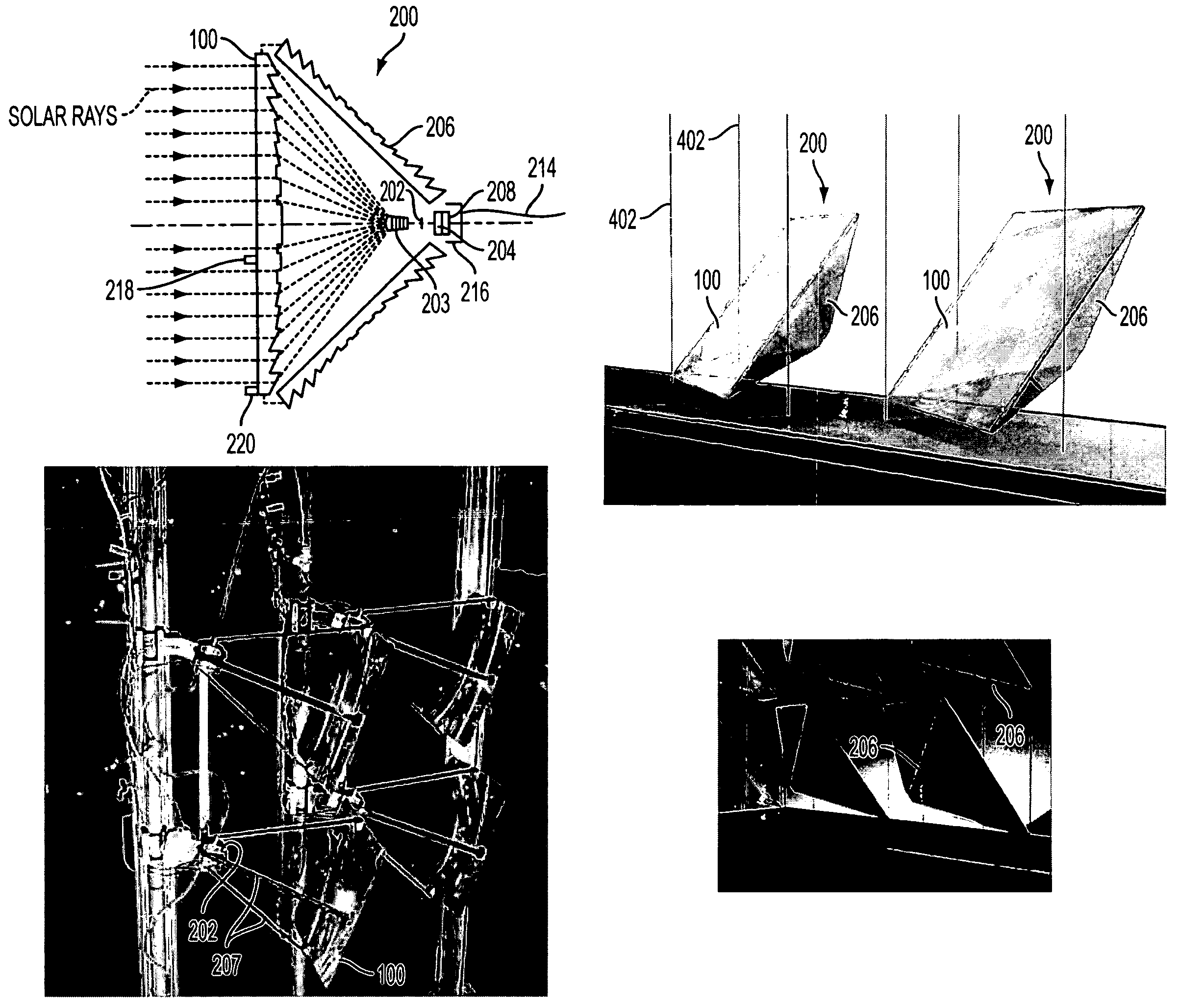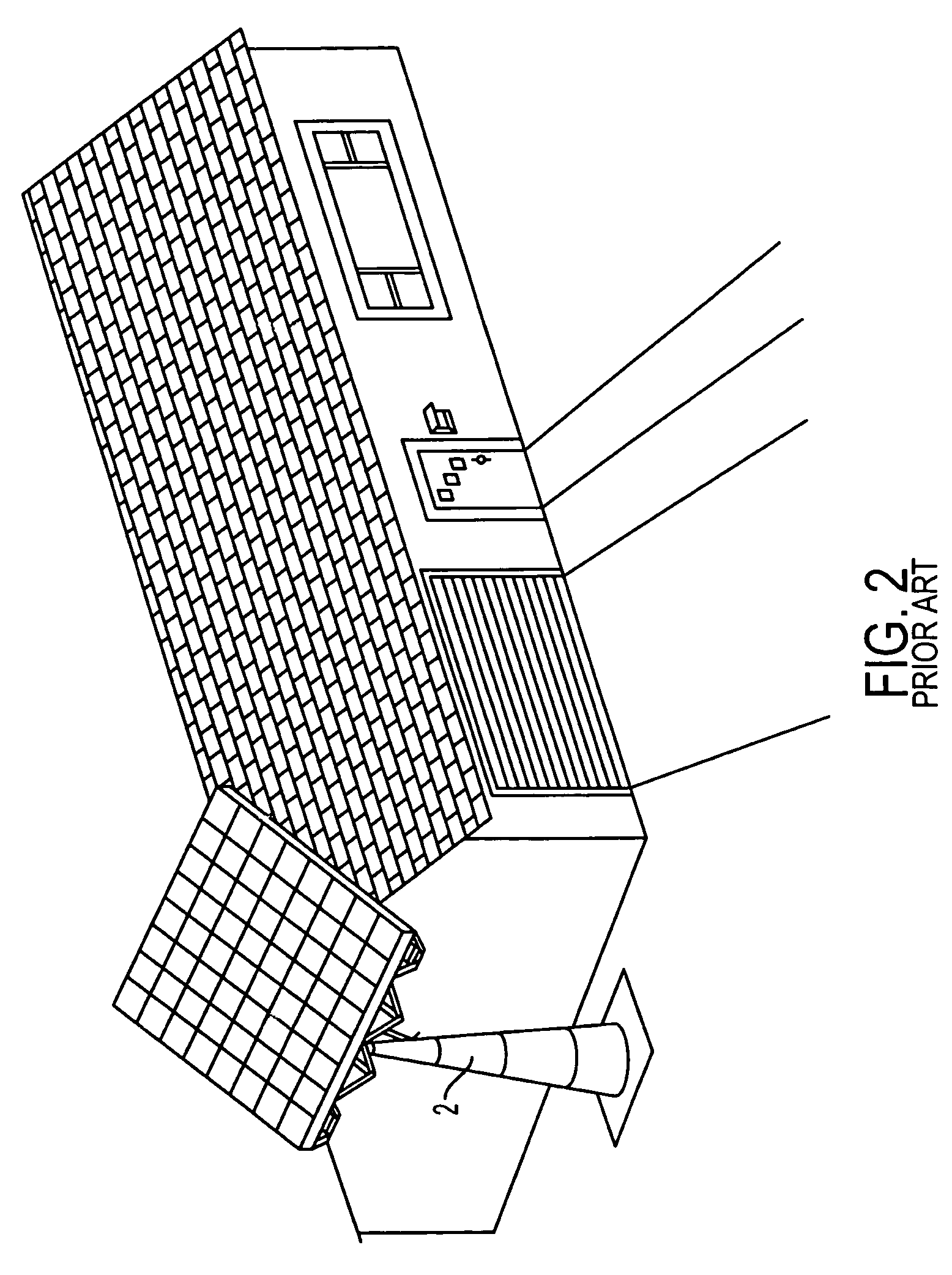Concentrating type solar collection and daylighting system within glazed building envelopes
a solar collector and daylighting technology, applied in the field of multi-functional systems, can solve the problems of large amount of silicon required, hampered widespread adoption of solar powered systems for general use, and inability to meet the requirements of flat plate technology
- Summary
- Abstract
- Description
- Claims
- Application Information
AI Technical Summary
Benefits of technology
Problems solved by technology
Method used
Image
Examples
Embodiment Construction
[0035]The present inventors have discovered that by taking a different approach to the flat plate and stand alone technologies, a superior solar power generation system could be achieved. While the ‘flat plate’ PV system is relatively expensive and inefficient to overcome the impediment of long cost pay-back periods, a system of the preferred embodiments of the present invention focuses on integrating concentrator PV technology into existing structural and environmental systems of buildings, thereby removing the need for large, costly tracking devices. The system of the preferred embodiments of the present invention contains a plurality of miniaturized solar modules, each of which contains a photovoltaic (i.e., solar) cell and a focusing device, such as a lens. The term miniaturized means that the modules are at least an order of magnitude smaller than the stand alone PV concentrator system shown in FIG. 2. The modules are integrated and distributed in a building envelope, preferabl...
PUM
 Login to View More
Login to View More Abstract
Description
Claims
Application Information
 Login to View More
Login to View More - R&D
- Intellectual Property
- Life Sciences
- Materials
- Tech Scout
- Unparalleled Data Quality
- Higher Quality Content
- 60% Fewer Hallucinations
Browse by: Latest US Patents, China's latest patents, Technical Efficacy Thesaurus, Application Domain, Technology Topic, Popular Technical Reports.
© 2025 PatSnap. All rights reserved.Legal|Privacy policy|Modern Slavery Act Transparency Statement|Sitemap|About US| Contact US: help@patsnap.com



